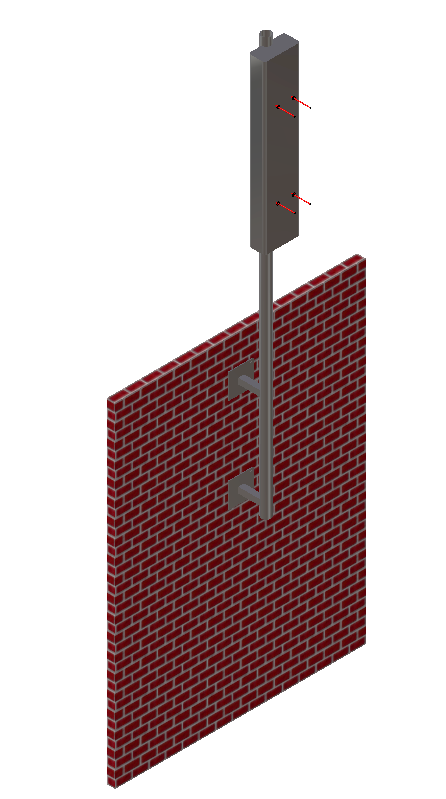
In wall mounted pole structures, the function of anchor bolts is to transfer design forces such as uplift due to wind or vertical gravitational loads to the masonry. KAEG employs advanced engineering best practices to more consistently design and analyse anchors in order to ensure the installation properly embody its requirements.
The method of calculating the pull-out load is based on the shape of the failure surface, a truncated cone, observed during base material failure (Destructive loading). The proof test load is determined through structural analysis of two scenarios; wind perpendicular to wall and wind parallel to wall, taking ancillary orientation into account.
Anchors are tested (Non-destructive loading) with a pass result prior to installation to the calculated proof test load to confirms the holding power of anchors for the purpose of providing assurance of correct installation.
In the event that the calculated pull out load values is high, either load bearing internal back-plates or additional back-plated brackets are installed to strengthen the wall mounted connection, which negates the need to proof test the anchors.
Unlike concrete, masonry walls are not uniform base material and the location of the anchors in the wall affect the performance. Therefore, anchor designs require careful considerations in order to ensure that the applied loads are sufficiently distributed and the masonry is robust.
KAEG are at the forefront of providing valued engineering to achieve cost- and installation effective design solutions in the telecommunication industry to network providers. Contact our expert team at: info@ka-engroup.com to learn more and discuss how we can best serve your needs.


